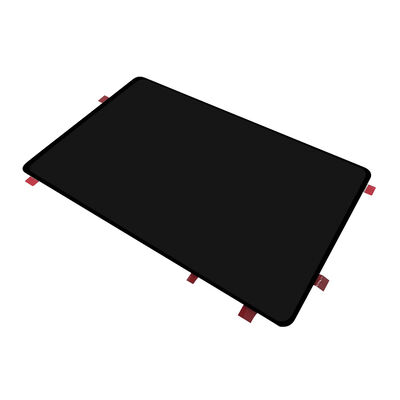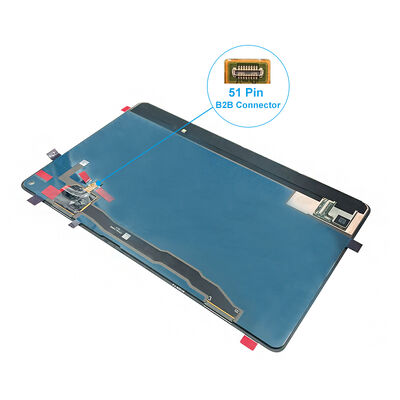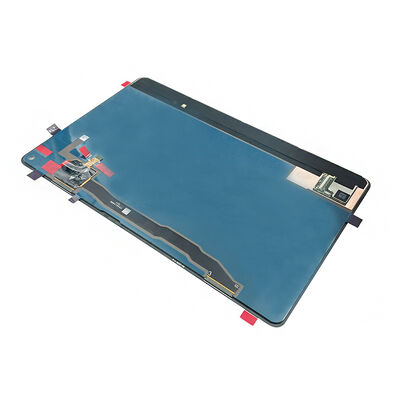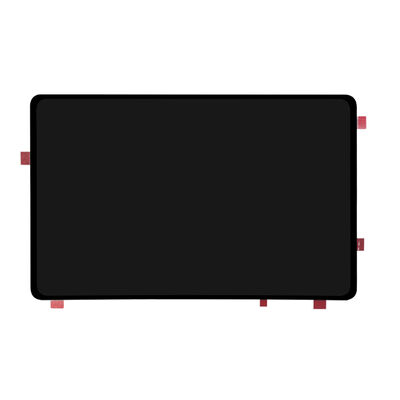Όλα τα Προϊόντα
-
Επίδειξη LCD TFT
-
Επίδειξη οθόνης αφής TFT
-
Στρογγυλή επίδειξη TFT
-
tft επίδειξη χρώματος
-
η ενότητα επίδειξης
-
Οθόνη Micro OLED
-
Τύπος ράβδου TFT
-
Τετράγωνη οθόνη TFT
-
Υψηλή επίδειξη φωτεινότητας LCD
-
Δείκτης LCD COB
-
Φως του ήλιου αναγνώσιμο TFT
-
Επίδειξη UART TFT
-
Ενότητα επίδειξης LCD
-
Επίδειξη PMOLED
-
epaper επίδειξη
-
Ψηφιακή επίδειξη οδηγήσεων
-
Χωρητική επιτροπή αφής
11.2 Inch High Resolution AMOLED Display Module with oncell touch, 2560*1536 Dots and 450c/d Brightness
| Τόπος καταγωγής | Κίνα |
|---|---|
| Μάρκα | HuaXin |
| Πιστοποίηση | ISO14001/ ISO9001/IATF16949 |
| Αριθμό μοντέλου | HX20QBC73.A |
| Έγγραφο | HX20QBC73.A SPEC.pdf |
| Ποσότητα παραγγελίας min | 180 |
| Τιμή | $108 |
| Συσκευασία λεπτομέρειες | BLISTER+BOX FOAM+BUBBLE BAG+ΕΣΩΤΕΡΙΚΟ ΚΑΡΤΟ+Κύριο χαρτοκιβώτιο |
| Χρόνος παράδοσης | 6 εβδομάδες ~ 8 εβδομάδες |
| Όροι πληρωμής | T/T |
| Δυνατότητα προσφοράς | 50k το μήνα |

Με ελάτε σε επαφή με δωρεάν δείγματα και δελτία.
WhatsApp:0086 18588475571
wechat: 0086 18588475571
Skype: sales10@aixton.com
Εάν έχετε οποιαδήποτε ανησυχία, παρέχουμε τη 24ωρη σε απευθείας σύνδεση βοήθεια.
xΛεπτομέρειες
| Τεχνολογία προβολής | οθόνη hd amoled | Όνομα | Εικόνα LCD OLED |
|---|---|---|---|
| Μέγεθος | 11.2" | Ψήφισμα | 2560RGB*1536 |
| Λάμψη | 450C/D | Διασύνδεση | MIPI 2 θυρών |
| Οδήγηση IC | RM692H0 |
Μπορείτε να σημειώσετε τα προϊόντα που χρειάζεστε και να επικοινωνήσετε μαζί μας στον πίνακα μηνυμάτων.
Περιγραφή προϊόντων
HX20QBC73.A is 11.2 inch amoled display module with oncell touch Display color: 1.07B (RGB x 10 bits) and Display format: 11.2” (2560RGBx1536) and Pixel arrangement: Real RGB
Display Interface: MIPI 2-port D-PHY TP Interface: SPI Driver IC : RM692H0 , Touch screen: On-cell; Touch IC: GT6975P
Product Parameter
| Part No. | HX20QBC73.A |
| Display Size | 11.2 inch AMOLED display |
| Outline Size (mm) | 249.22*154.08 |
| AA Size (mm) | 244.22*146.53 |
| Resolution | 2560RGB*1536 |
| Interface | MIPI 2-port |
| Brightness | 450c/d |
| View Angle | all |
| Driving IC | RM692H0 |
| Touch screen | On-cell |
Product Picture
![]()
![]()
![]()
![]()
Drawing & Pin Definition
OLED Product Knowledge
OLED Advantages:
- Lighter and thinner than LCDs
- High contrast ratio
- High color saturation
- Lower power consumption
OLED Disadvantages:
- AMOLED is more expensive than LCD and TFT
- Lifetime is shorter than LCD and TFT
Company Information
Huaxin Advantage:
- Factory base located at inland city which has cost effective
- Most advanced new equipment which can keep quality stable
- Most processes using fully automatic equipment which has efficiency and stable quality
- Professional engineers and production leaders with 20+ years experience in LCD field
- Self design for customized product
Our Certificates:
- ISO14001
- ISO9001/IATF16949
- SGS of LCD module
Production Capacity
| Annual Production Capacity | 2021 (Current) | 2022 (Goal) | 2023 (Challenge) | 2024 (Challenge) | 2025 (Challenge) | Remark |
|---|---|---|---|---|---|---|
| LCD Production Capacity | 4.5 | 9 | 9 | 9 | 9 | Unit: thousands of logarithms/Day |
| LCM Production Capacity | 70 | 150 | 300 | 450 | 450 | Unit: Thousand piece/Day |
| Backlight Production Capacity | 100 | 200 | 300 | 500 | 500 | Unit: Thousand piece/Day |
| OLED Production Capacity | 10 | 20 | 30 | 40 | 50 | Unit: Thousand piece/Day |
Product Application
- Safety box & instrument
- Lock & smart home
- Transmitter & watch
- Watch & radio
- Collimator & navigator
AMOLED Display Characteristics
- Self-Emissive Pixels
- High Contrast Ratio
- Color Accuracy and Vibrancy
- Wide Viewing Angles
- Power Efficiency
- Thinness and Flexibility
- Fast Response Time
Power Efficiency Comparison
1. Power Consumption:
AMOLED displays consume power on a per-pixel basis, meaning that pixels displaying black or dark content consume very little power, while pixels displaying bright or white content consume more power. LCD and LED displays require a constant backlight that consumes power regardless of the displayed content.
2. Content Dependency:
AMOLED displays are more power-efficient for content with dark or black areas, as individual pixels can be turned off to save power. LCD and LED displays consume a relatively constant amount of power as the backlight remains active.
3. Brightness Control:
AMOLED displays can dynamically adjust pixel brightness for better efficiency in low-brightness scenarios. LCD and LED displays typically have fixed backlight brightness, resulting in higher power consumption.
4. Display Size:
AMOLED displays tend to be more power-efficient for smaller sizes as consumption scales with pixel count. Larger LCD/LED displays may require more power-hungry backlights, reducing efficiency compared to same-size AMOLED displays.
Συνιστώμενα προϊόντα










